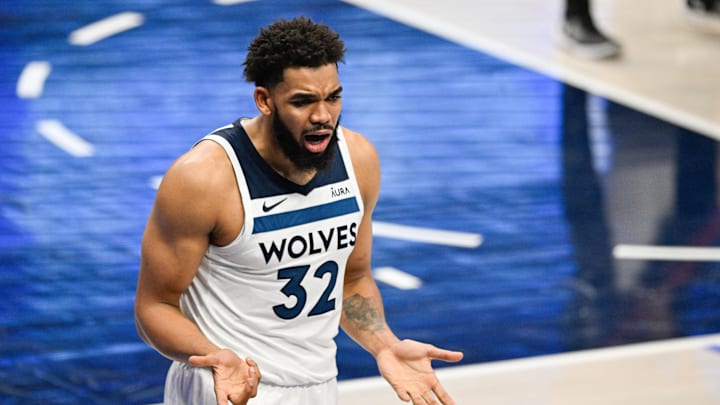Undoubtedly, Karl-Anthony Towns has become a star-level player and is one of the most offensively gifted big men in the league. However, when the Minnesota Timberwolves drafted Towns No. 1 overall back in 2015, the belief around the league was that KAT could be a two-way monster. Averaging 2.3 blocks at Kentucky definitely helped this case, and many believed defense was Towns' main strength heading into the draft. Towns drew several comparisons, including Patrick Ewing on draft night, and Andrew Bogut was another popular one. Of course, Towns has been a vastly different player than both of these guys.
Towns certainly has exceeded his offensive expectations. Nevertheless, his defense hasn't lived up to his lofty pre-draft expectations. During a recent episode of The Game Theory Podcast, Sam Vecenie and Bryce Simon discussed how we should have expected Towns not living up to his defensive expectations. Vecenie specifically pointed to Towns' college foul rate as a concern; fouls have infamously been a key problem for him at the NBA level.
Towns is a subpar defender
While Towns averaged 2.3 blocks in college at the NBA level, he has never averaged more than 1.7 blocks, a number that came in his rookie season. Towns hasn't averaged more than a block in the past three seasons. Furthermore, Towns has averaged a staggering 3.4 fouls for his career, and he has led the league in total fouls twice. This shouldn't be a surprise, looking at his profile entering the league. Despite playing just 21.1 minutes in college, Towns averaged 2.9 fouls; his 115 fouls led the SEC.
Playing in John Calipari's system and for an elite Kentucky squad certainly benefited Towns. As a result, many people overlooked Towns' defensive red flags and set expectations for him to be a two-way monster. Last season, opponents shot 65.7 percent at the rim against Towns. In addition to struggling as a rim protector, Towns isn't very mobile and can be attacked on switches, especially given his poor discipline.
Towns' subpar defense is something Wolves fans know all too well. The Wolves needed to pair Towns with an elite rim protector in Rudy Gobert to cover up KAT's weaknesses. Before Gobert, the Wolves never made it out of the first-round, and Towns could never anchor a high-level defense.
However, during Gobert's second season with the team, Minnesota made it to the Western Conference finals and posted the league's best defense. This was, of course, connected to Anthony Edwards' ascension, but changing Towns' role was also a key factor.
The Wolves traded Karl-Anthony Towns for Julius Randle and Donte DiVincenzo. Towns' contract was a key reason why the Wolves moved on from him. However, Towns was a better defender, it's possible his contract would have been viewed differently.
Ultimately, looking at how players were projected coming into the draft is interesting. There wasn't much evidence that Towns would become one of the best shooting big men of all time, as he made just two 3-pointers at Kentucky. However, Towns' defensive flaws should have been discussed more, despite his impressive block numbers.
